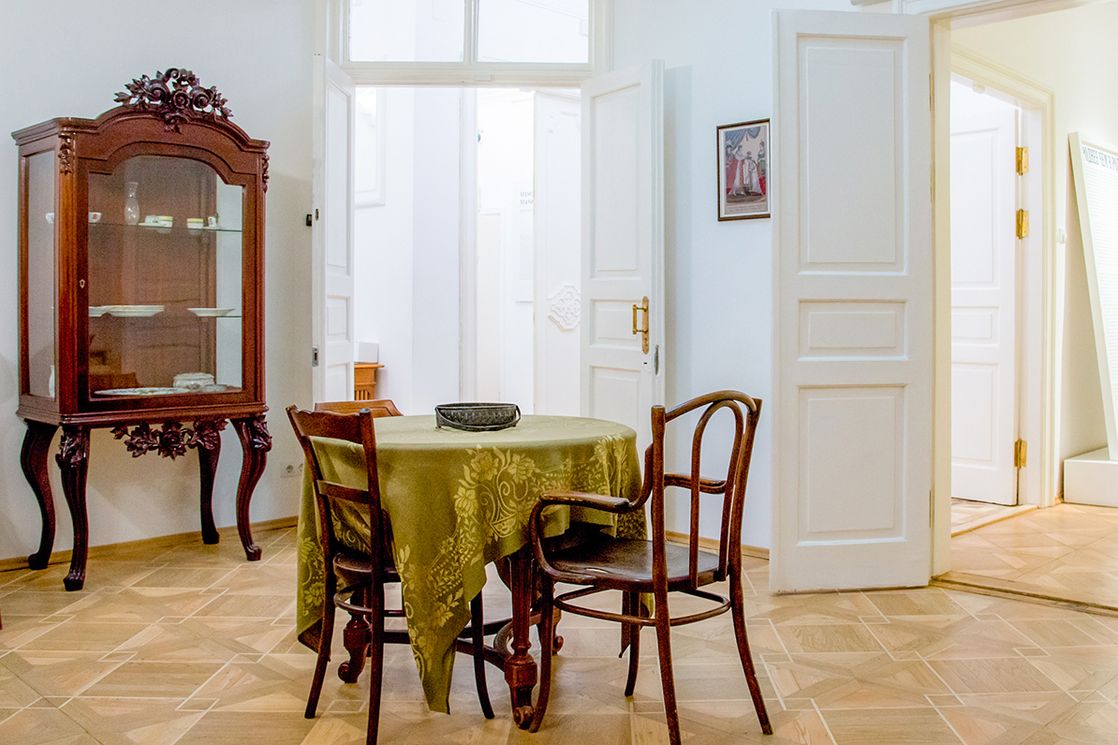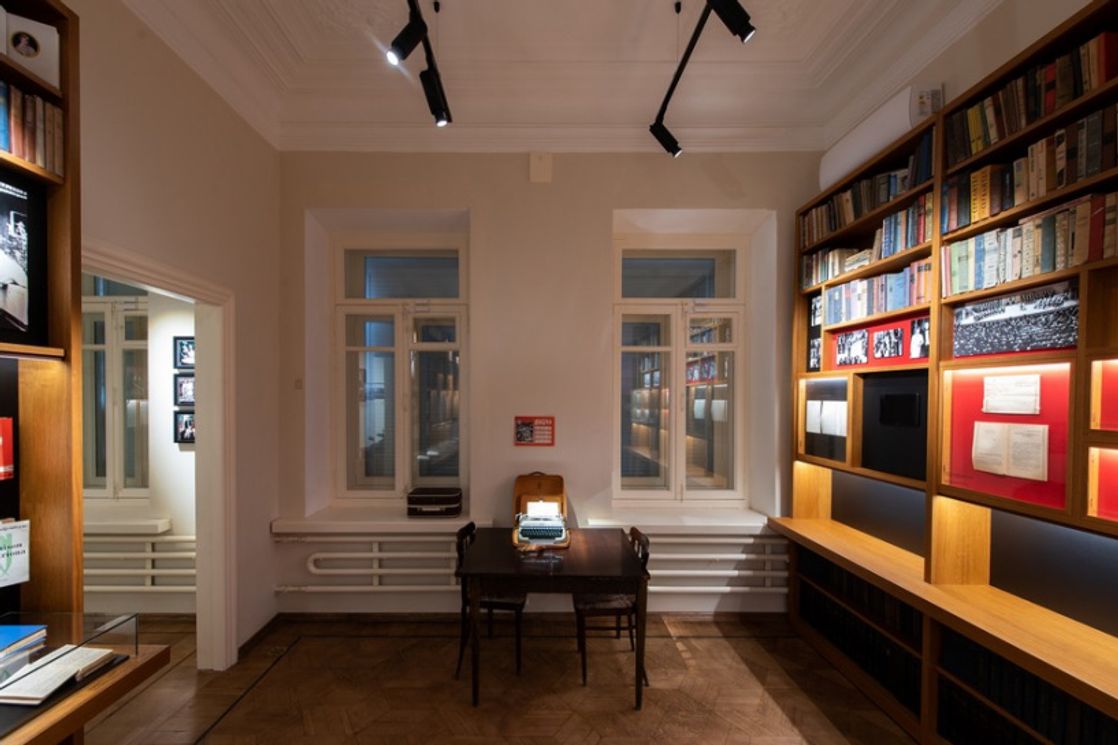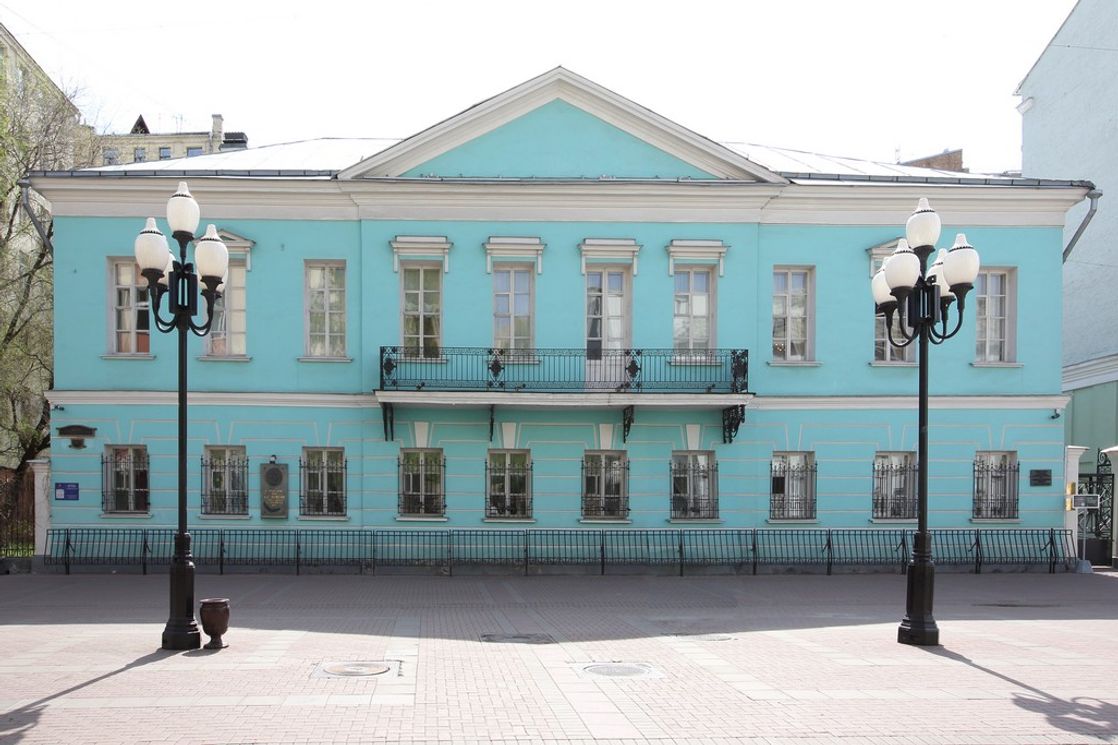Pay a Visit to Moscow’s Famous Writers
Famous writers have a huge impact on our cultural life; the characters they create can give us new insights and help us understand life better. But what do writers feel when they create a piece of writing and what helps them do so? Perhaps the answers to these and other questions about such figures can be found by looking at the environment where they lived and worked. Moscow has many ‘memorial apartments’ where visitors can learn more about famous writers and see how they lived—here is a selection of some of them.
Fyodor Dostoevsky Memorial Apartment
This museum is located in the flat occupied by Dr Mikhail Dostoevsky—the writer's father—and his family, and is where the writer was born. This structure has never been rebuilt; the walls and ceiling are as they were in Dostoevsky's time, and the interior was re-created based on the memoirs of the writer's younger brother, who was an architect and left very elaborate drafts and descriptions.
What to see:
The apartment museum contains plenty of authentic belongings, including furniture and family portraits. The modest apartment of Dr Mikhail Dostoevsky and his family is on the ground floor. The first floor is home to an exhibition dedicated to the writer's life and works. Exhibits include photographs, portraits, the writer's belongings, and illustrations for Dostoevsky's books. On the second floor, guests can visit an exhibition on the impact of Dostoevsky's works on the film industry and visual art.
Address: 2 Ulitsa Dostoevskogo
Nearest metro station: Dostoevskaya
Opening hours: Tue, Fri–Sun: 11 am–6 pm (ticket office closes at 5:30 pm)
Wed, Thu: 11 am–9 pm (ticket office closes at 8:30 pm)
Tickets: 400 rub
Mikhail Bulgakov Memorial Apartment
The ‘ill-famed flat’ on 50 Bolshaya Sadovaya Street from Bulgakov's The Master and Margarita had a real-life counterpart. In 1921–1924, the writer lived there himself, although the real address was 10 Bolshaya Sadovaya Street. While the building officially became a museum in 2007, its history dates back to the 1970s. Fans of the book came to pay their respects to the late author—or perhaps to the demonic characters who lived there in the book. Until the 1980s, visitors could only see the entrance and the stairs, as the flat was inhabited by several families. Nevertheless, enthusiastic fans left drawings, quotations from the book, poems and wishes on the walls of the entrance—these have been preserved and became part of the museum.

What to see:
Visitors to this typical communal apartment will see lots of remnants of the past. In the hall, there are ancient suitcases, umbrellas, and well-travelled hats that now rest on ancient hooks. In the blue study, which has the same layout as another of Bulgakov’s Moscow flats, you can see authentic furniture, books, and other personal belongings. The same is true of the writer's room, where Bulgakov created his immortal characters—the view from the window hasn't changed much since then. The kitchen also remains unchanged since the 1930s, and still contains an indispensable primus stove. The other rooms show what life was like at the beginning of the 20th century, and one of the rooms sometimes hosts live concerts.
Address: 10 Ulitsa Bolshaya Sadovaya (entrance 6, floor 4, flat 50)
Nearest metro station: Mayakovskaya
Opening hours: Tue–Wed 12 pm–7 pm, Thu: 2 pm–9 pm,
Fri–Sun: 12 pm–7 pm.
Tickets: 360 rub
Alexander Pushkin Memorial Apartment
The iconic Russian poet Alexander Pushkin was born in Moscow. It is the city where he spent his first eleven years, as well as where he later fell in love with and married Natalia Goncharova. Shortly before his marriage, Pushkin rented a flat on Arbat Street in the city centre. Unlike another Pushkin memorial flat in St Petersburg, this one reflects happier moments in the poet’s life (though as a newly-wed, he didn't write a line of poetry). The apartment was the venue for his bachelor party on February 17, 1831, the guestlist of which included his younger brother Lev and Prince Pavel Vyazemsky. Pushkin and his wife spent three months here before leaving for Tsarskoe Selo.
What to see:
The exhibition occupies two floors of a long-standing mansion. The memorial flat is located upstairs and the exhibition 'Pushkin and Moscow' is downstairs. Although there is no authentic furniture left, the interior was re-created based on Pavel Vyazemsky's memoirs. Visitors can see personal belongings, such as a table belonging to Natalia and portraits of the couple. There are also pictures of Pushkin's friends on display in the state room, as well as copies of Pushkin's handwritten manuscripts (the originals are in St Petersburg).
Address: 53 Ulitsa Arbat
Nearest metro station: Smolenskaya
Opening hours: Wed, Fri–Sun: 10 am–6 pm (ticket office closes at 5:30 pm)
Thu: 1 pm–9 pm (ticket office closes at 8:30 pm)
Tickets: 250 rub
Marina Tsvetaeva Memorial Apartment
In September 1914, two young parents and their two-year old daughter moved in a rented flat in a long-standing tenement building on Borisoglebsky Pereulok. The young mother was Marina Tsvetaeva, one of Russia’s most gifted poets. She and her family spent the next eight years in this conveniently situated and well-designed flat, where Marina felt at home. Here, the couple were often visited by famous writers, poets, and intellectual elites of the time. However, in 1914, the outbreak of the First World War and the end of the Belle Époque in Europe marked the beginning of hard times for Marina and many others in the intellectual elite. In 1941, Tsvetaeva died in Yelabuga at the age of 48, but her creative legacy continues to inspire to this day. Her flat, which was turned into a museum in 1990, is extremely popular among Moscow locals.

What to see:
The apartment houses 45,000 exhibits ranging from documents and photographs to antique furniture. Not all of them belonged to Tsvetaeva, but they are still of great value and interest. Visitors can see books written and published at the beginning of the 20th century, letters, and the flat itself—an eyewitness to the end of an era.
Address: 6 Borisoglebsky Pereulok
Nearest metro station: Arbatskaya, Smolenskaya
Opening hours: Tue–Sun, sessions: 12 pm–1:15 pm, 1:45 pm–3 pm, 3:30 pm–4:45 pm, 5:15 pm–6:30 pm, and one extra session on Thu: 7:00 pm–8:15 pm
Tickets: 700 rub
Alexandr Solzhenitsyn Memorial Apartment
This museum is devoted to the life of Alexandr Solzhenitsyn, the Soviet dissident writer and prominent critic of communism. The exhibition covers the author’s life and the history of the Soviet dissident movement.

What to see:
The exhibition is housed in seven rooms and covers two time frames: the beginning of the 1970s and the 1990s, with a focus on the writer's arrest and the suppression of freedom. The flat has a typical 1970s kitchen, as well as photographs and real documents from the period.
Visitors can learn more about the writer's arrest in the very hall where it happened. The biggest room recounts Solzhenitsyn’s literary journey, from writing in secret while in custody to being awarded the Nobel Prize. There is a nursery room exhibition devoted to the writer's family, while the 'Red Wheel' and 'The Study' showcase his study. The 'Photolaboratory' shows how the writer secretly worked on The Gulag Archipelago.
Address: 12/8 Ulitsa Tverskaya
Nearest metro station: Tverskaya
Opening hours: Wed–Sun, excursions at 1 pm, 3 pm, 5 pm
Tickets: 200 rub
Text by Olga Nozdrina, first-year master’s student of ‘Contemporary History Studies in History Instruction at Secondary Schools’, intern at the HSE University English website team




